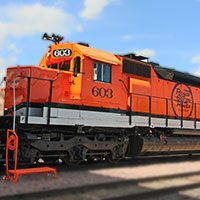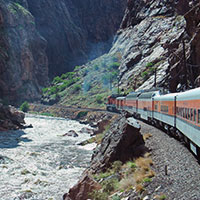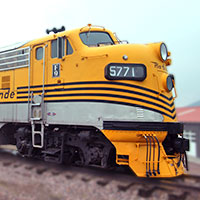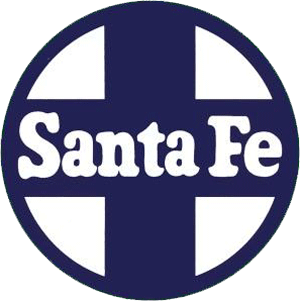
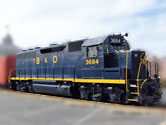



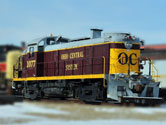
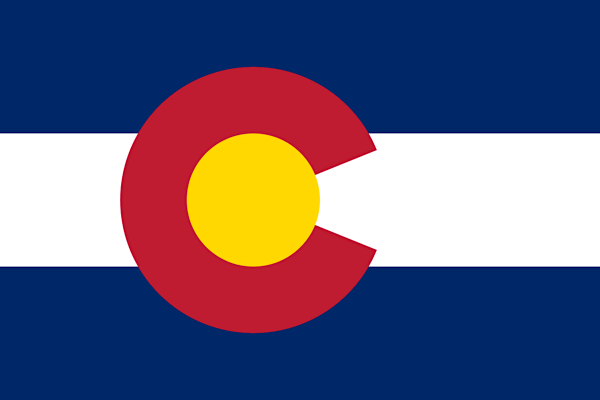


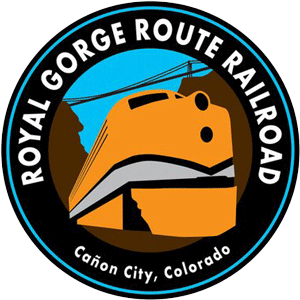 |
Royal Gorge Route Railroad"Colorado’s most breathtaking rolling restaurant" |
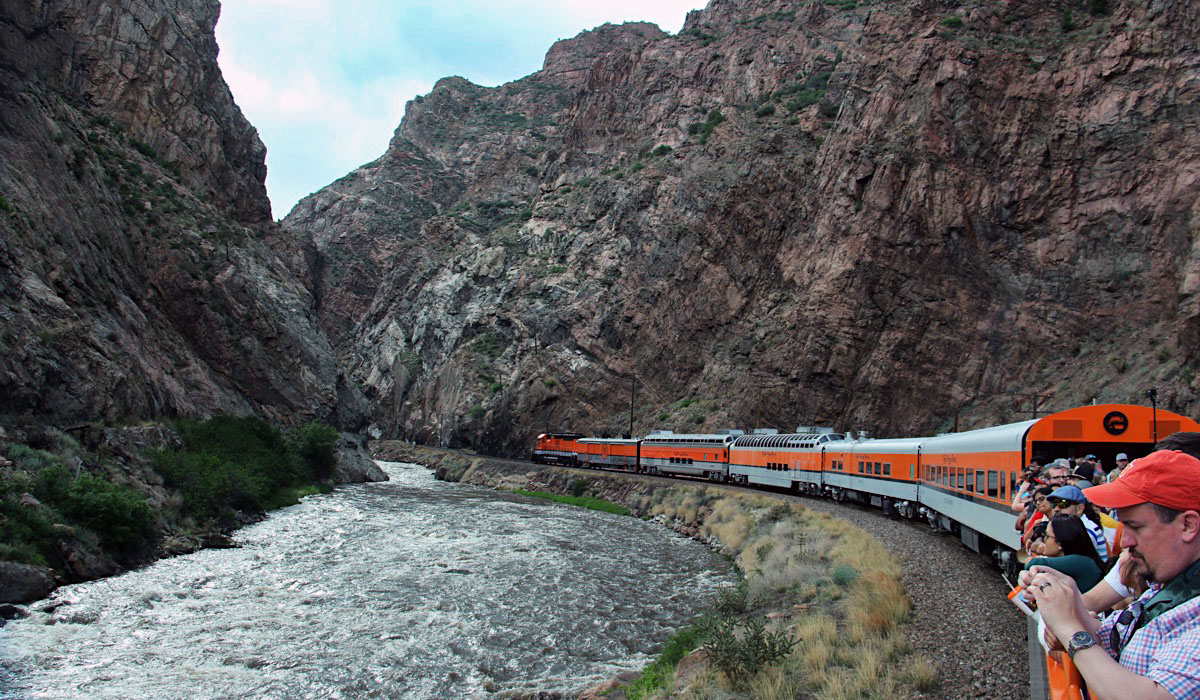
Sample, Co / May 2023 / RWH

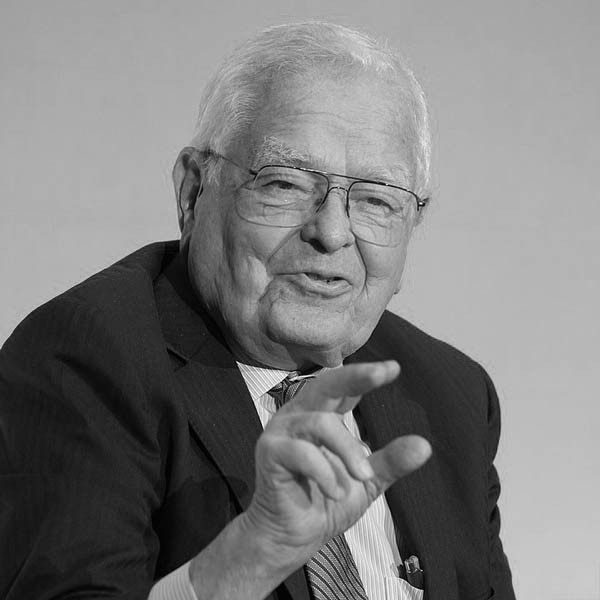
 olorado Governor, Roy Romer, told the Union Pacific that the state would not oppose the abandonment provided that the 12 miles from Canon City to Parkdale would be left intact. At the time, Parkdale was just a 9,200 ft CTC controlled passing track on the railroad, there was no industrial or commercial activity. There were the foundations of a long, dismantled feldspar processing plant. Romer wanted the line through the Royal Gorge to be available as a means for tourists to see this magnificent natural gorge from the river level. To this end agreement was reached.
olorado Governor, Roy Romer, told the Union Pacific that the state would not oppose the abandonment provided that the 12 miles from Canon City to Parkdale would be left intact. At the time, Parkdale was just a 9,200 ft CTC controlled passing track on the railroad, there was no industrial or commercial activity. There were the foundations of a long, dismantled feldspar processing plant. Romer wanted the line through the Royal Gorge to be available as a means for tourists to see this magnificent natural gorge from the river level. To this end agreement was reached.
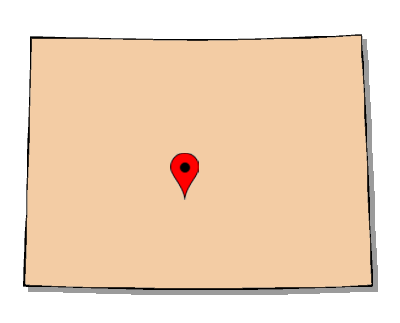
 ased in Cañon City, Colorado, the Royal Gorge Route Railroad is a premier tourist rail operation offering passengers a ride through Colorado's breathtaking Royal Gorge. Operating since 1998, the tourist hauler follows a meandering route established in the late 19th century and made famous by the Denver & Rio Grande Western Railroad and its larger network of routes connecting Denver to mining towns around the Rocky Mountains. Up for abandonment in the 1990s by corporate successor Union Pacific, the 12 scenic miles from Cañon City to Parksdale, through the Royal Gorge itself, were saved for future tourist operations. Carving through the rugged granite cliffs of the Royal Gorge, today trains provide passengers views of the steep canyon walls and the Arkansas River running below.
ased in Cañon City, Colorado, the Royal Gorge Route Railroad is a premier tourist rail operation offering passengers a ride through Colorado's breathtaking Royal Gorge. Operating since 1998, the tourist hauler follows a meandering route established in the late 19th century and made famous by the Denver & Rio Grande Western Railroad and its larger network of routes connecting Denver to mining towns around the Rocky Mountains. Up for abandonment in the 1990s by corporate successor Union Pacific, the 12 scenic miles from Cañon City to Parksdale, through the Royal Gorge itself, were saved for future tourist operations. Carving through the rugged granite cliffs of the Royal Gorge, today trains provide passengers views of the steep canyon walls and the Arkansas River running below.
The Royal Gorge Route has developed a first-class fleet of passenger cars for this service, including bi-level full-length domes, dining cars offering various levels of service, and open-air excursion cars. Operation is push-pull, with locomotives pulling trains through the Gorge, then pushing back to the Cañon City depot with a conductor piloting on the rear car. Earlier in its operations, the railroad made use of F unit "Covered Wagons" painted in a scheme reminiscent of the Rio Grande; today, most trains are pulled by a small fleet of standard road switchers. Shortline hauler Rock & Rail Railroad also uses this line for occasional freight business.

Click to see the Royal Gorge Route Railroad plotted on a Google Maps page
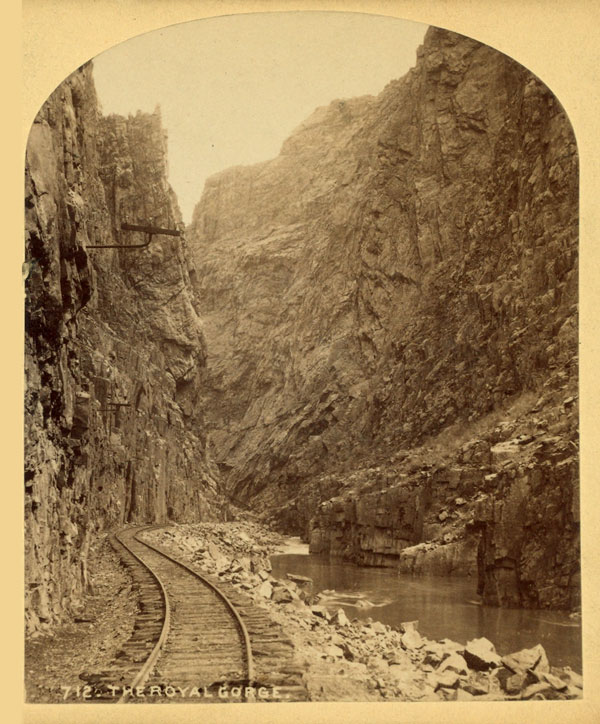 In the late 1870s, miners descended on the upper Arkansas River valley of Colorado in search of carbonate ores rich in lead and silver. The feverish mining activity in what would become the Leadville district attracted the attention of the Rio Grande and Santa Fe railroads, each of which already had tracks in the lower Arkansas valley: Santa Fe in Pueblo and the D&RG near Cañon City, some 35 miles west. Extending either of these lines to Leadville would require laying more than 100 miles of track through the "Grand Canyon of the Arkansas," a mountain valley 50 miles in length at a consistent and railroad-friendly water grade of one percent.
In the late 1870s, miners descended on the upper Arkansas River valley of Colorado in search of carbonate ores rich in lead and silver. The feverish mining activity in what would become the Leadville district attracted the attention of the Rio Grande and Santa Fe railroads, each of which already had tracks in the lower Arkansas valley: Santa Fe in Pueblo and the D&RG near Cañon City, some 35 miles west. Extending either of these lines to Leadville would require laying more than 100 miles of track through the "Grand Canyon of the Arkansas," a mountain valley 50 miles in length at a consistent and railroad-friendly water grade of one percent.
For two railroads to occupy a river valley is not a problem in principle, but west of Cañon City the Arkansas River cuts through the Royal Gorge, a high plateau of igneous rocks forming a spectacular steep-walled gorge over 1,000 feet deep and 6 miles long. At its narrowest point, sheer walls on both sides plunge into the river, creating a nearly impassable barrier. So on this route, two railroads could not share the valley.

collection
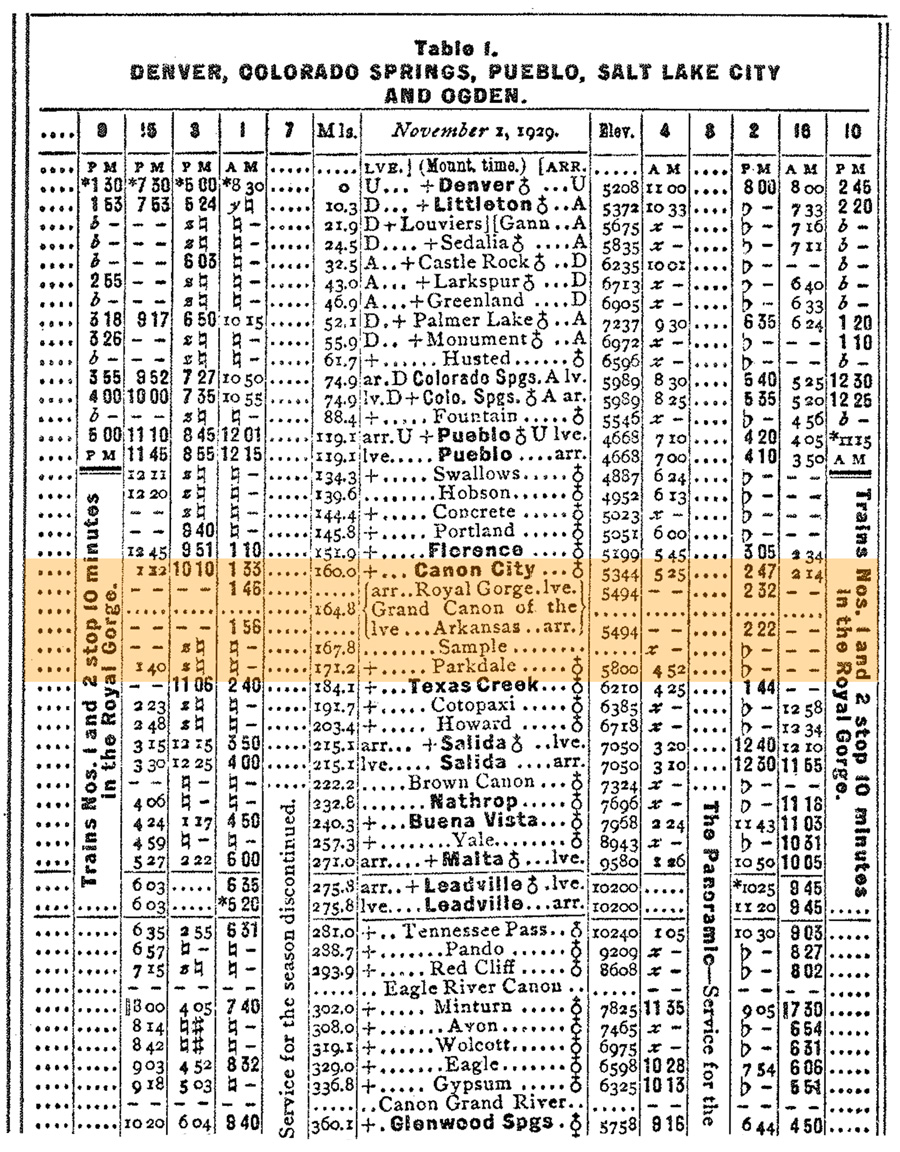
1930 Official Guide ad / collection
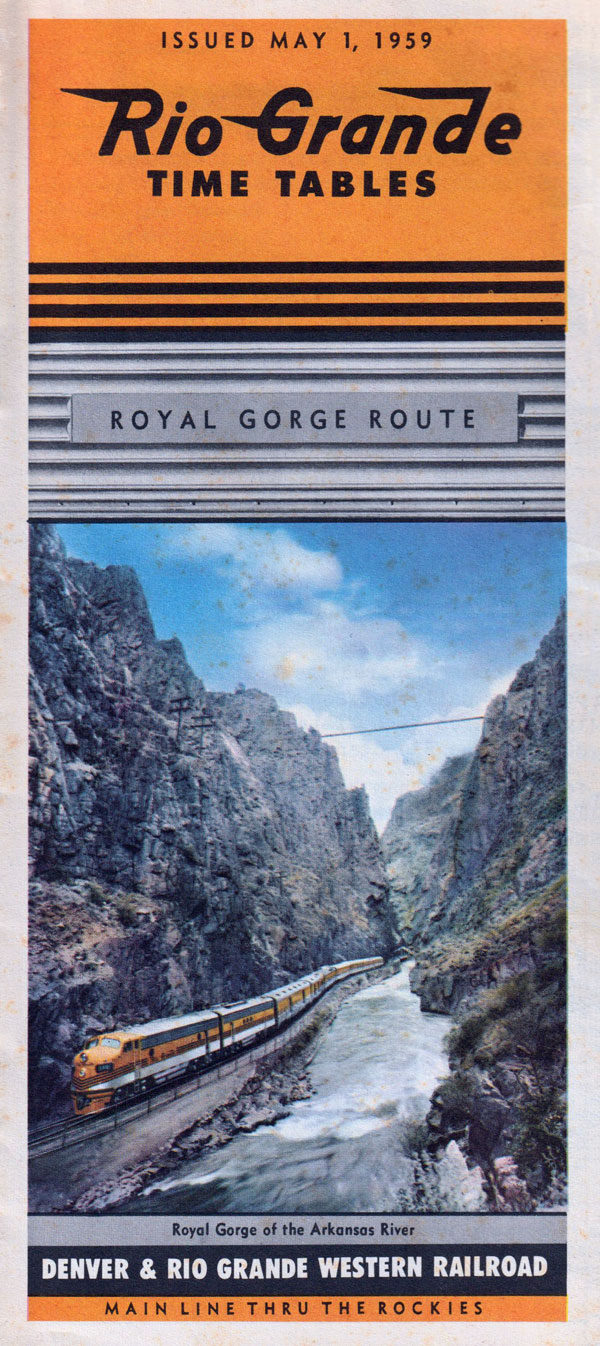
1959 timetable / collection
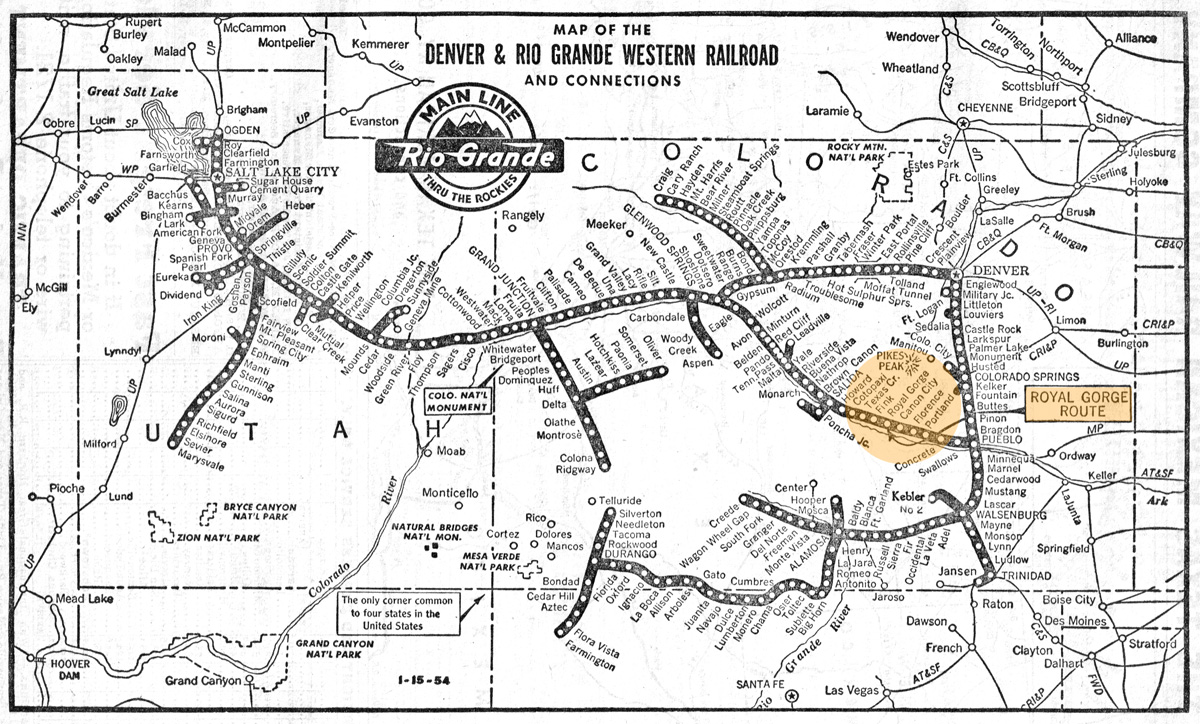
1955 Official Guide map / collection

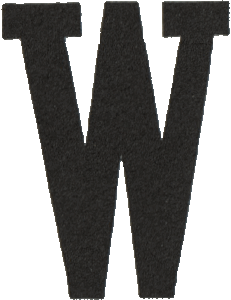 hen we set out to resurrect the Royal Gorge Route Railroad line through Colorado’s grandest canyon, our vision was to offer far more than the traditional tourism experience. We knew we had a head start with unmatched Colorado scenery and the most amazing section of railroad track in the country – so we set our sights on stunning railcar renovations, first-class food and exceptional service.
We’ve been industry leaders since we launched the train in 1998. Back then, no other Colorado train offered first-class dining and service. We’re more passionate than ever about amazing food, wine, local microbrews and top-notch cocktails, and we knew that our guests would appreciate a truly unique dining experience aboard the Royal Gorge Route.
hen we set out to resurrect the Royal Gorge Route Railroad line through Colorado’s grandest canyon, our vision was to offer far more than the traditional tourism experience. We knew we had a head start with unmatched Colorado scenery and the most amazing section of railroad track in the country – so we set our sights on stunning railcar renovations, first-class food and exceptional service.
We’ve been industry leaders since we launched the train in 1998. Back then, no other Colorado train offered first-class dining and service. We’re more passionate than ever about amazing food, wine, local microbrews and top-notch cocktails, and we knew that our guests would appreciate a truly unique dining experience aboard the Royal Gorge Route.
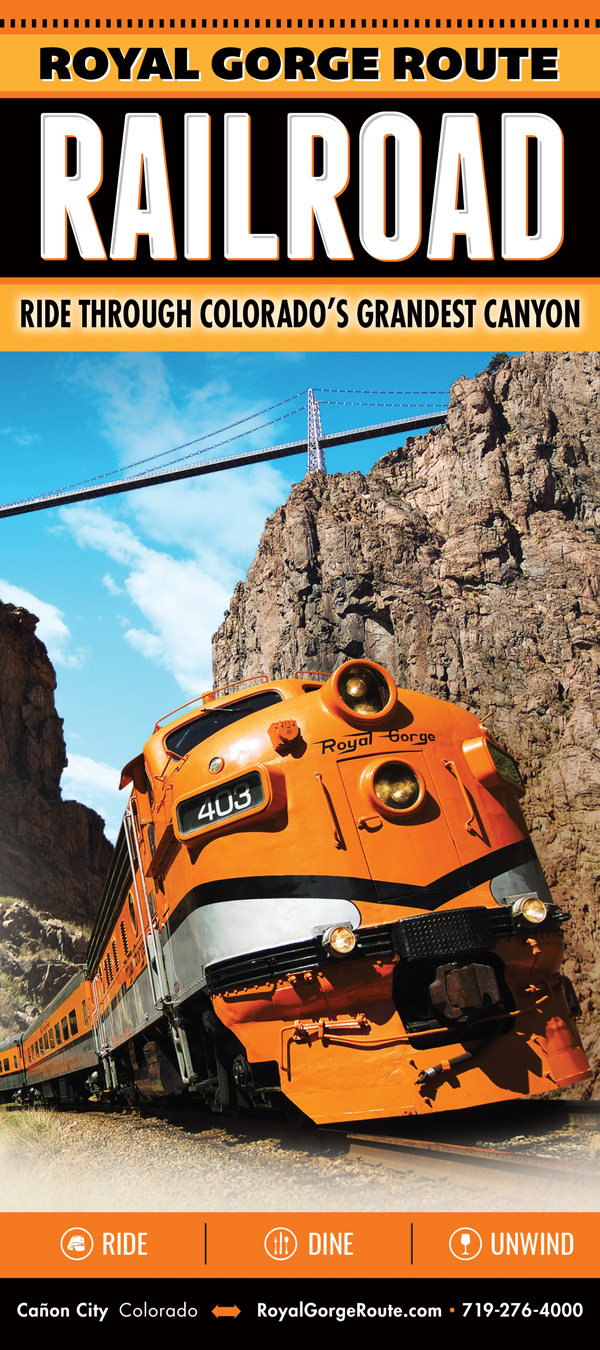
brochure / collection
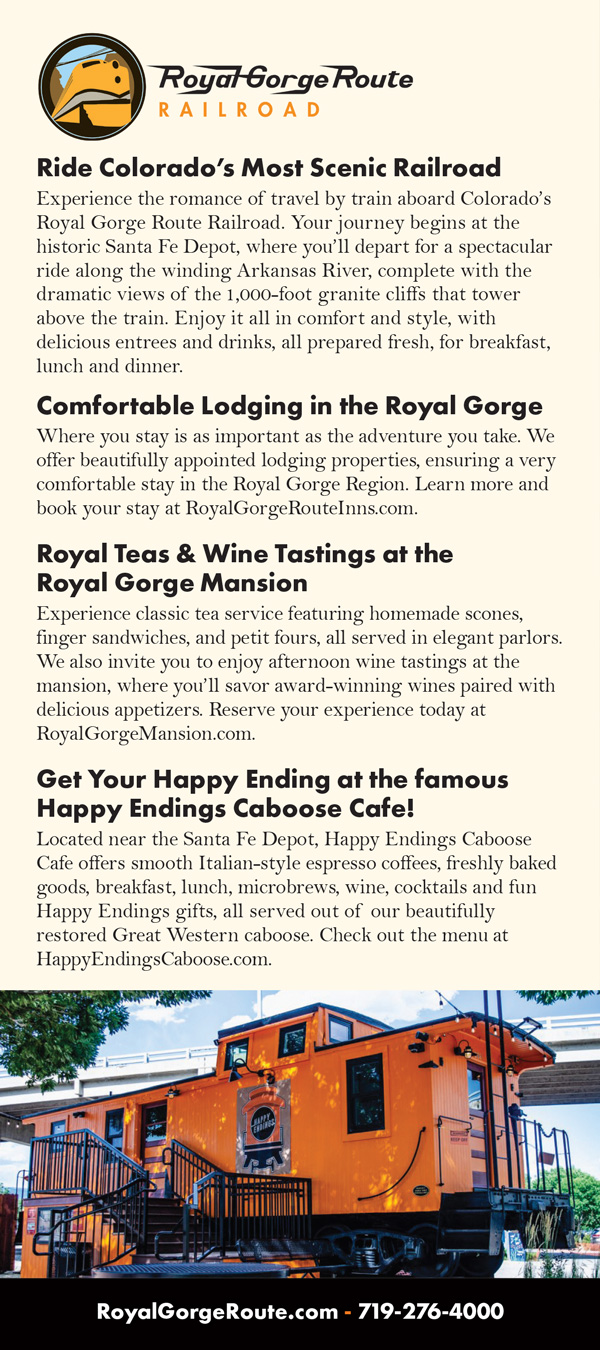
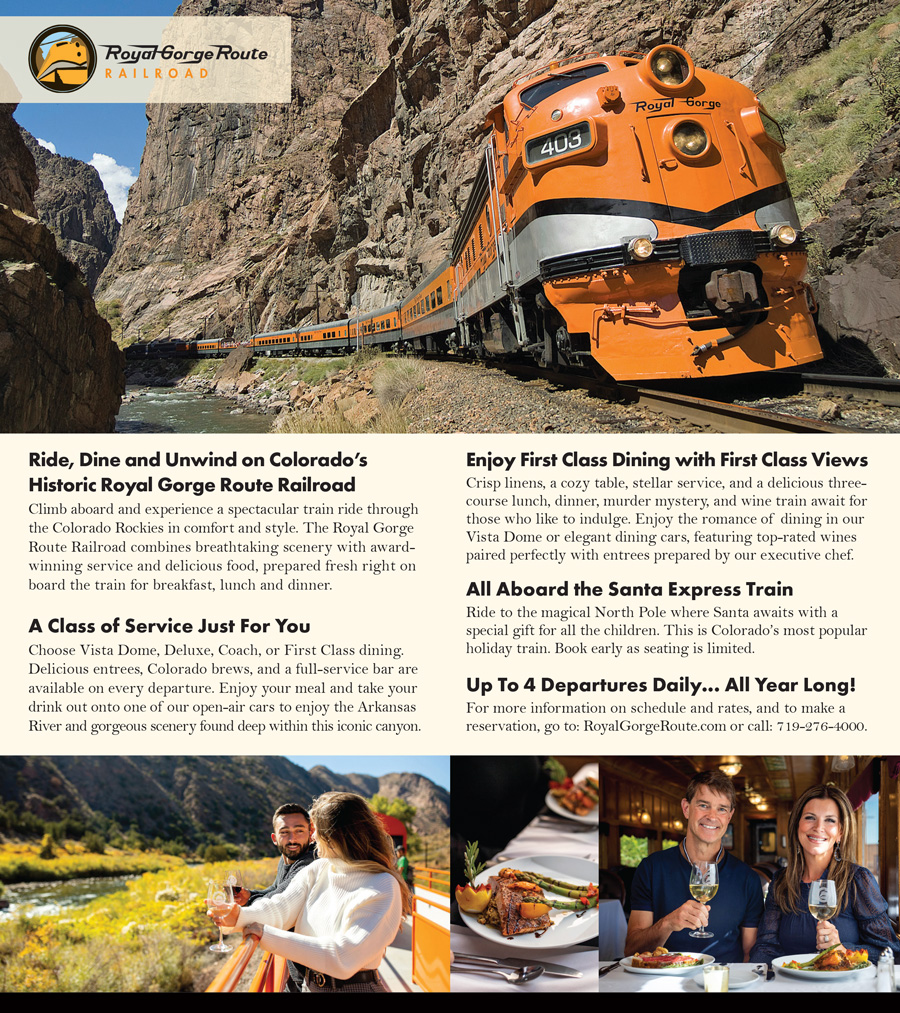
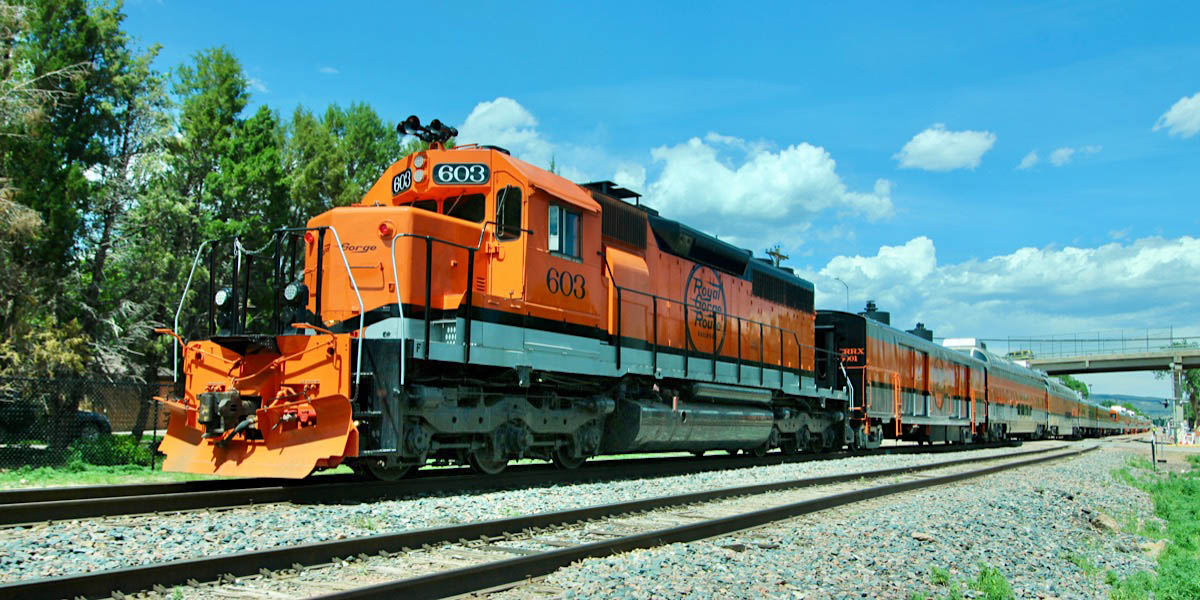
Cañon City, Co / May 2023 / RWH

Scrapbooks
 Cañon City
Cañon City
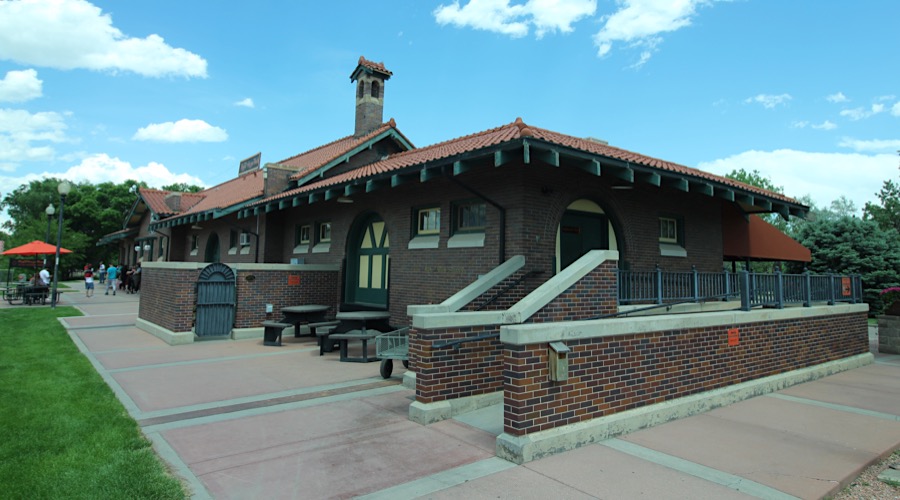
Cañon City, Co / May 2023 / RWH

Click to see the Cañon City Santa Fe depot plotted on a Google Maps page
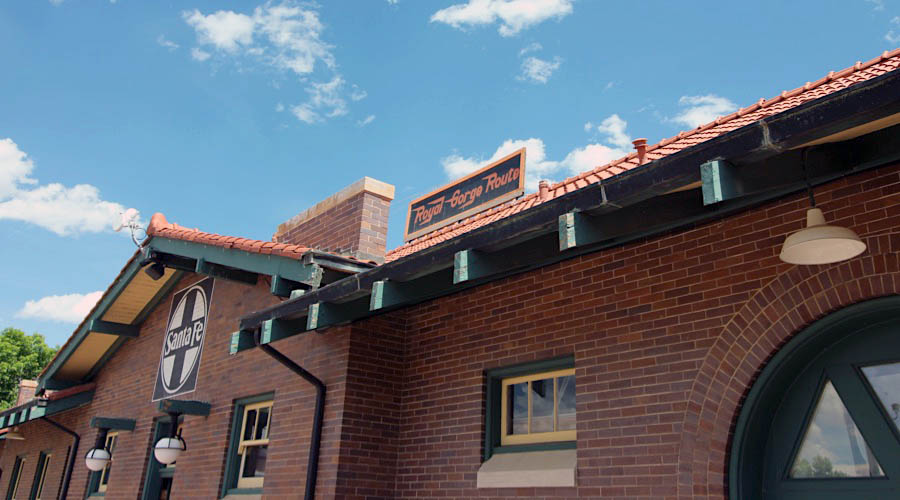
Cañon City, Co / May 2023 / RWH
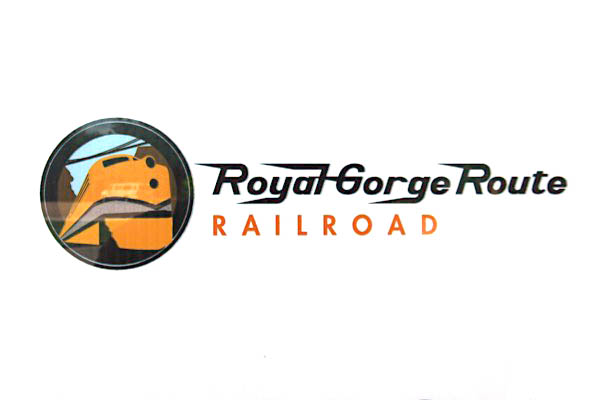
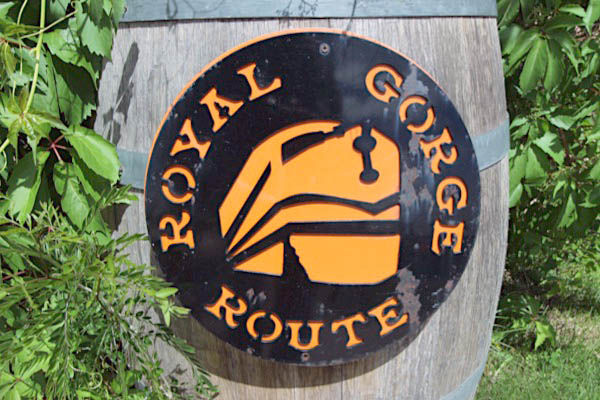
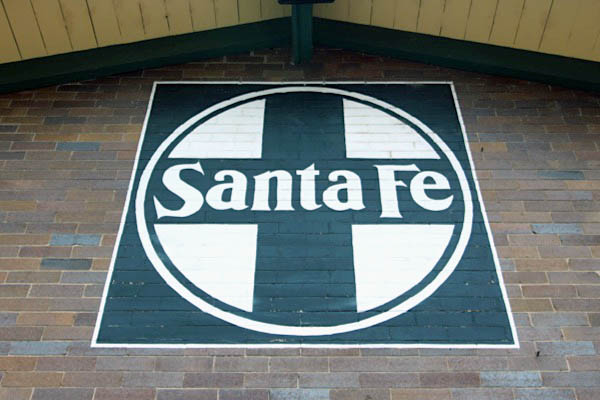
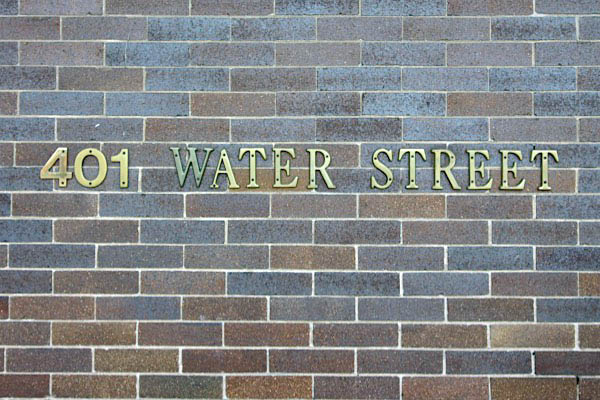
May 2023 / RWH

collection
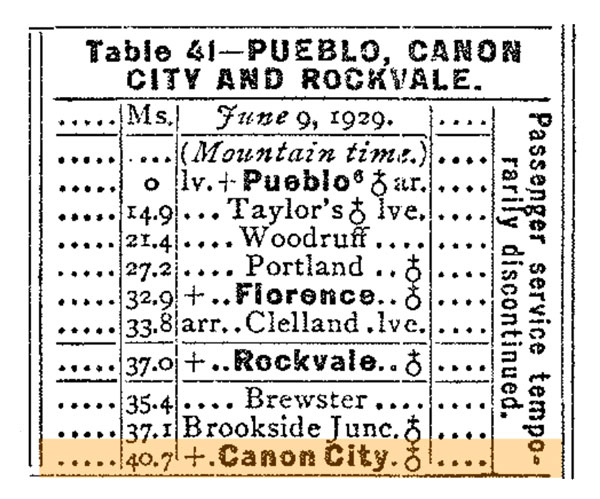
1930 Official Guide ad / collection
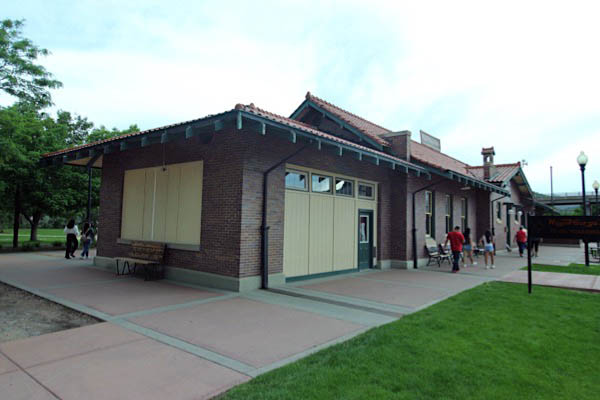
Cañon City, Co / May 2023 / RWH
 Article
Article
Back in Time: In the Aftermath of the Royal Gorge War, the Railroad Would Become Vital to Fremont County and Eventually Lead to the Tourist Train
February 29, 2020
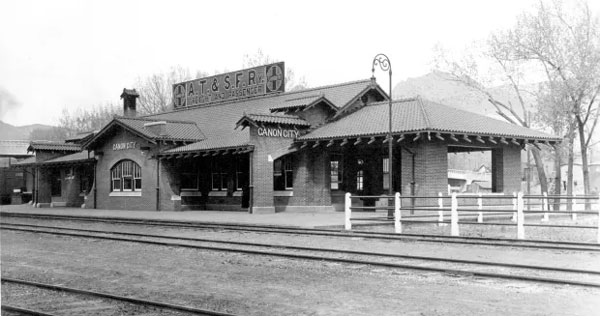 The Santa Fe railway continued to use the depot until the early 1980s for freight purposes hauling cement, oil, coal, produce, and ore. Eventually, the production of the products decreased and so did the demand for freight service. By the time the depot was boarded up in 1983, the company had dwindled to one employee.
The Santa Fe railway continued to use the depot until the early 1980s for freight purposes hauling cement, oil, coal, produce, and ore. Eventually, the production of the products decreased and so did the demand for freight service. By the time the depot was boarded up in 1983, the company had dwindled to one employee.
In 1994, the City of Cañon City bought the station and the six acres surrounding it for $10,290. Before the purchase could be completed, the Cotter Corp had to conduct an extensive clean up of radioactive waste left at the unloading site, according to a 1994 article. In 1997, the depot was incorporated as part of the $3.1 million River Station Project to be used as a family-style restaurant.
While the city was dedicated to maintaining the depot and utilizing it in the best way to fit the needs of the community, there was hope that one day it would be used as a passenger train depot again.
Talks of a passenger tourist train through the Royal Gorge are seen as early as 1989. A group of area representatives from Cañon City met with railroad officials to discuss a tourist train through the Royal Gorge to Leadville. “The six of us came out of that meeting feeling really good about the possibility of this happening in 1989, Marvin Monroe, a group spokesperson, said in an interview. However, a month later, hopes were dashed as the D&RG turned down the proposal due to the amount of freight traffic on the tracks.
In 1996, government officials from Eagle, Lake, Chafee, and Fremont counties gathered to discuss the future of the Tennessee Pass Line. The 173-mile line was, in its heyday, the highest active mainline railroad mountain pass in the United States. The consolidation of the Union Pacific Railroad with the Southern Pacific Railroad meant that the line could potentially be for sale.
Passing through multiple counties, the line included the much sought after 12 miles of track through the Royal Gorge. Several large rail companies seemed interested in the track with varying plans of tourism, freight, commuter uses or a hybrid. Greg Tabuteau from Royal Gorge Scenic Railway was also interested in buying the track-but only the section that ran through the Royal Gorge. With a plan to lease out the old Santa Fe Railroad depot as a place for ticket sales, restaurant, and gift shop, he hoped by offering a shorter trip for tourists the business would prosper. His plan also allowed for freight trains to use the rails at night.
Other ideas for the corridor would be to use it as a trail system, according to a February 1996 Pueblo Chieftain article. However, negotiations were slow-moving and it wasn’t until 1998 that the dream of a passenger tourist train finally would be reached.
On July 3, 1998, the Union Pacific Railroad sold the 12-mile section of track from Cañon City to Parkdale to the Royal Gorge Express. The new owner included two affiliates, the Rock and Rail and the Cañon City and Royal Gorge Railroad, according to a Pueblo Chieftain article. The rock and rail portion would provide freight service to the Parkdale gravel mining operation west of Cañon City, and the tourist rail, owned by Lindsey Ashby, would operate out of the old firehouse at 330 Royal Gorge Blvd.
In August 1998, the first group of tourists was able to board the Royal Gorge Route train, experiencing the same breathtaking canyon and unique views that those who had traveled the rails so many years before them.
Brooke Johnson / Cañon City Daily Record
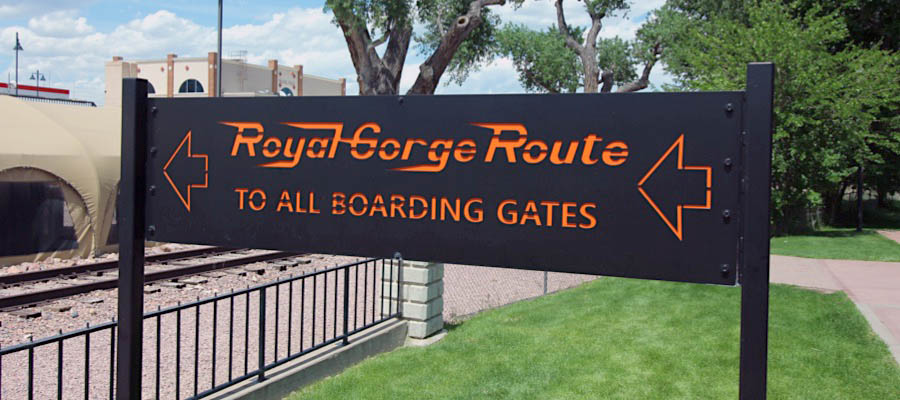
May 2023 / RWH
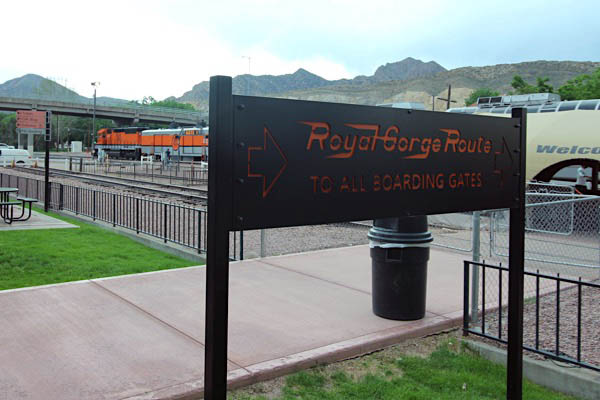
May 2023 / RWH
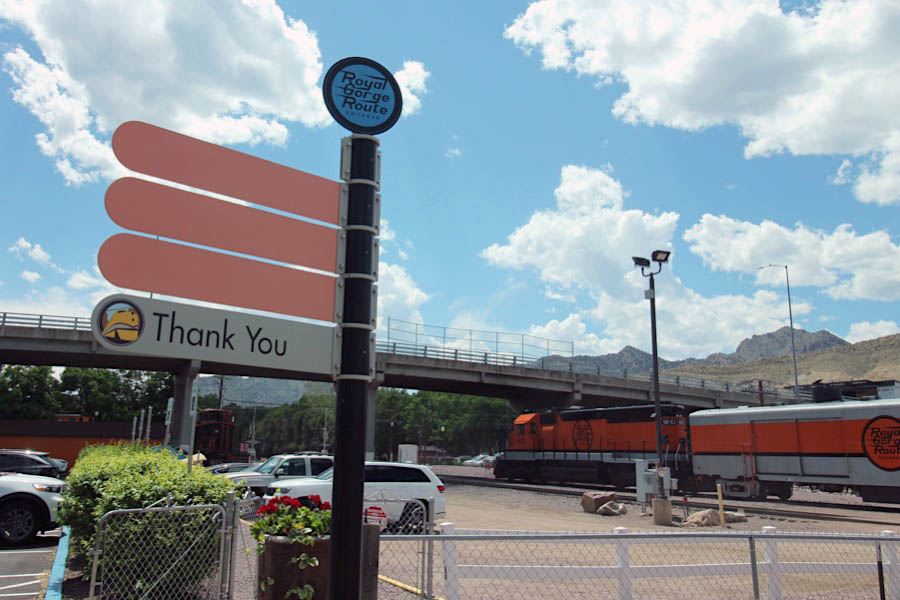
Cañon City, Co / May 2023 / RWH
Publications
 Lagniappe
Lagniappe
 Snapshots
Snapshots
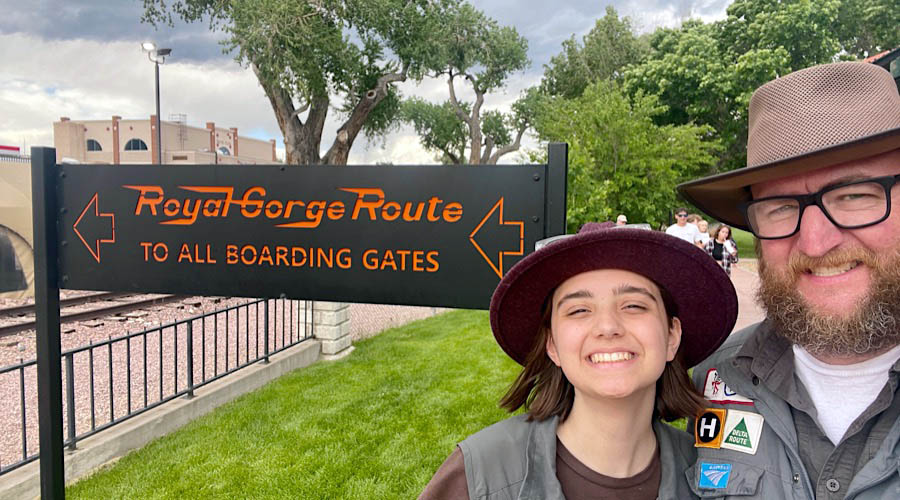
Cañon City, Co / May 2023 / RWH
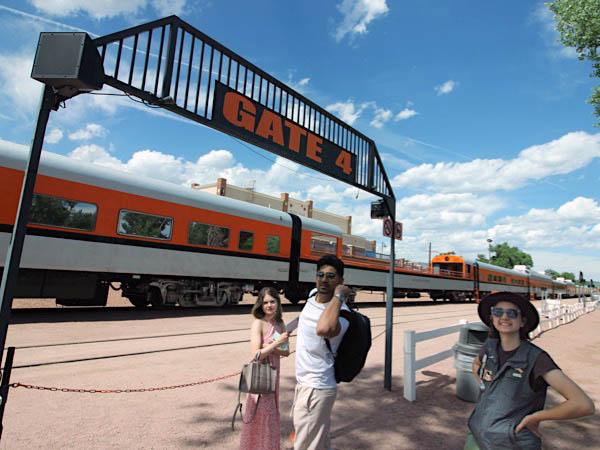
Cañon City, Co / May 2023 / RWH
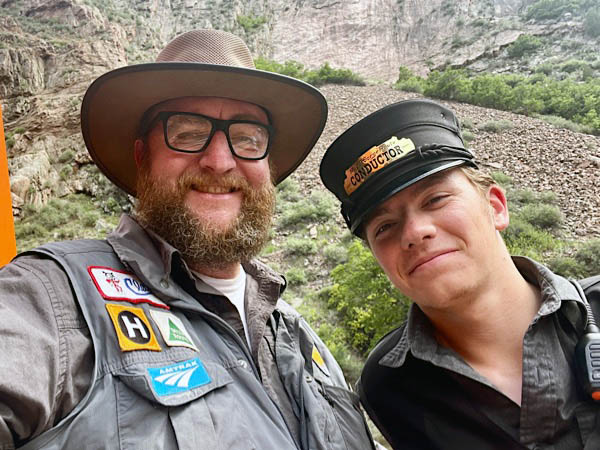
Sample, Co / May 2023 / RWH
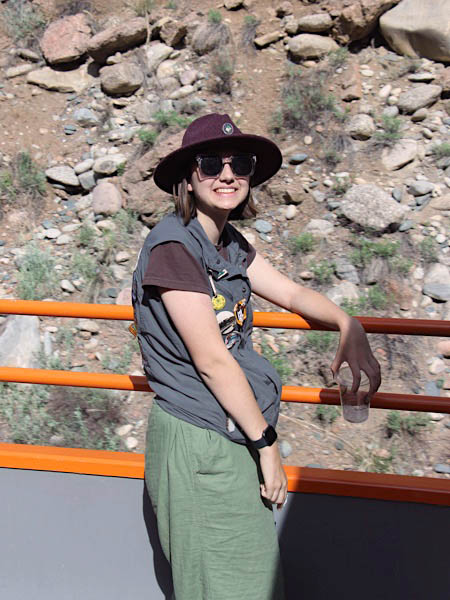
May 2023 / RWH
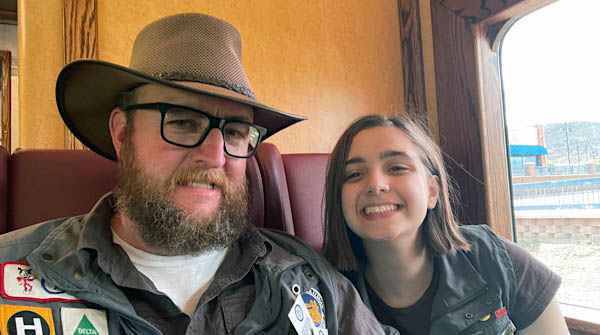
Cañon City, Co / May 2023 / RWH
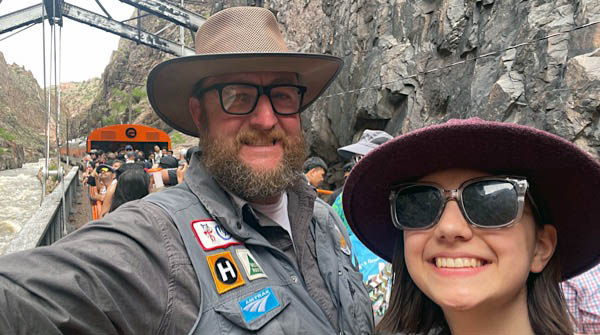
May 2023 / RWH
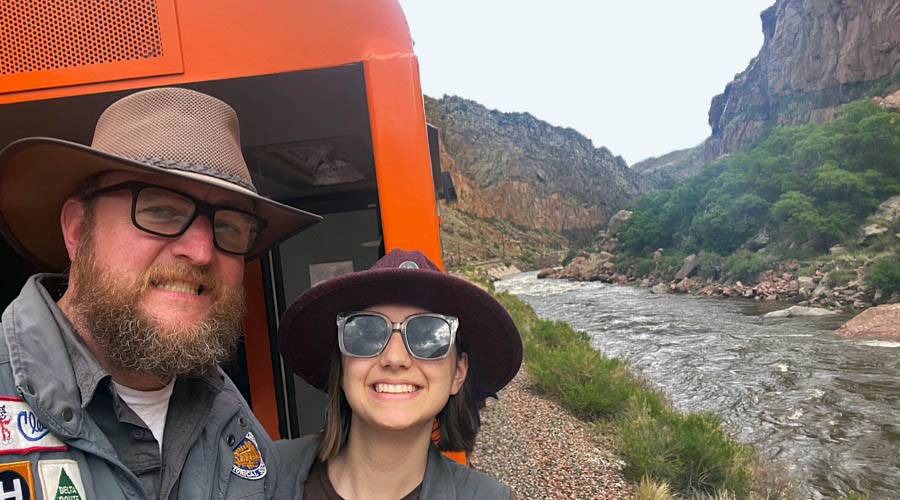
Fink, Co / May 2023 / RWH
Links / Sources
- Royal Gorge Route Railroad website
- Wikipedia article for Royal Gorge Route Railroad
- Cañon City's Royal Gorge Route Railroad page
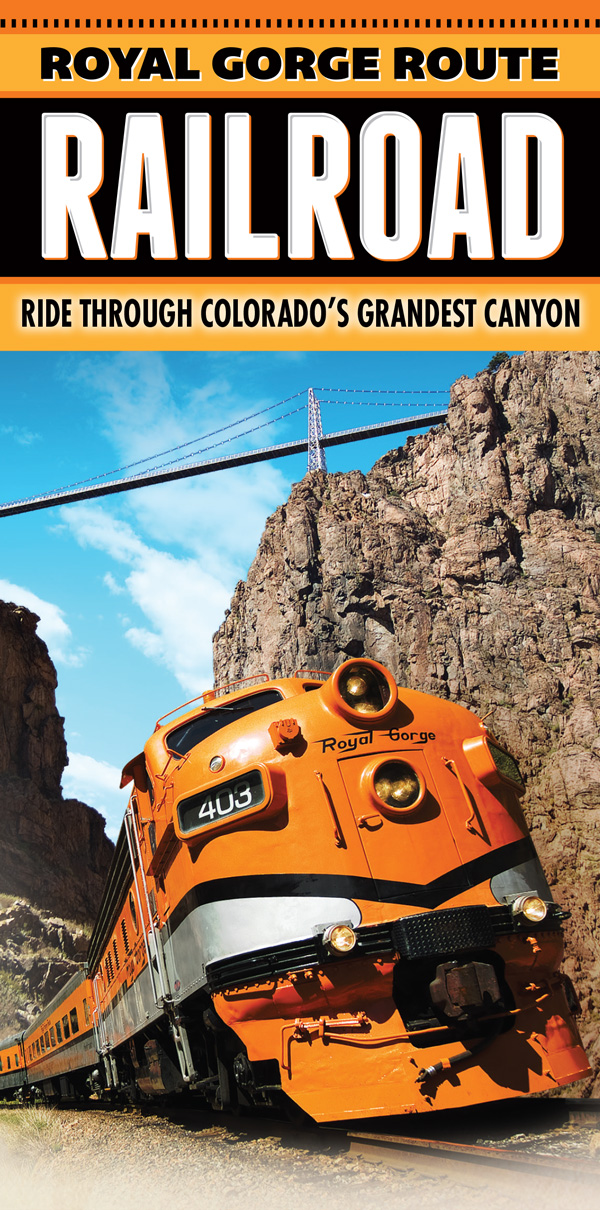
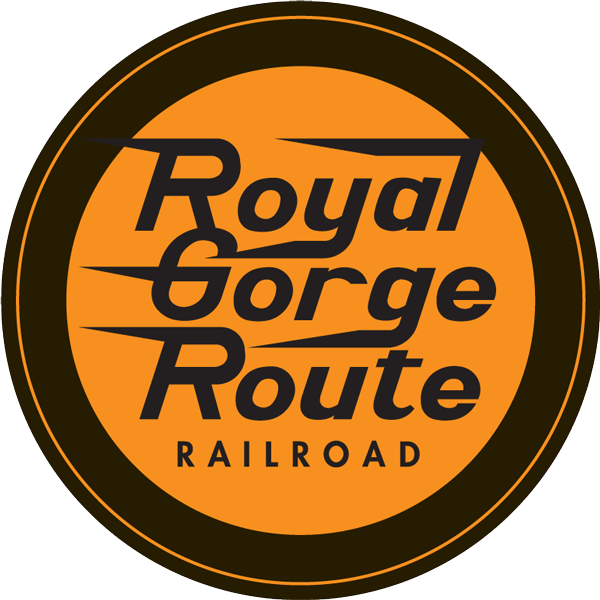 The Royal Gorge Route has developed a first-class fleet of passenger cars for this service, including bi-level full-length domes, dining cars offering various levels of service, and open-air excursion cars. Operation is push-pull, with locomotives pulling trains through the Gorge, then pushing back to the Cañon City depot with a conductor piloting on the rear car. Earlier in its operations, the railroad made use of F unit "Covered Wagons" painted in a scheme reminiscent of the Rio Grande; today, most trains are pulled by a small fleet of standard road switchers. Shortline hauler Rock & Rail Railroad also uses this line for occasional freight business.
The Royal Gorge Route has developed a first-class fleet of passenger cars for this service, including bi-level full-length domes, dining cars offering various levels of service, and open-air excursion cars. Operation is push-pull, with locomotives pulling trains through the Gorge, then pushing back to the Cañon City depot with a conductor piloting on the rear car. Earlier in its operations, the railroad made use of F unit "Covered Wagons" painted in a scheme reminiscent of the Rio Grande; today, most trains are pulled by a small fleet of standard road switchers. Shortline hauler Rock & Rail Railroad also uses this line for occasional freight business.


